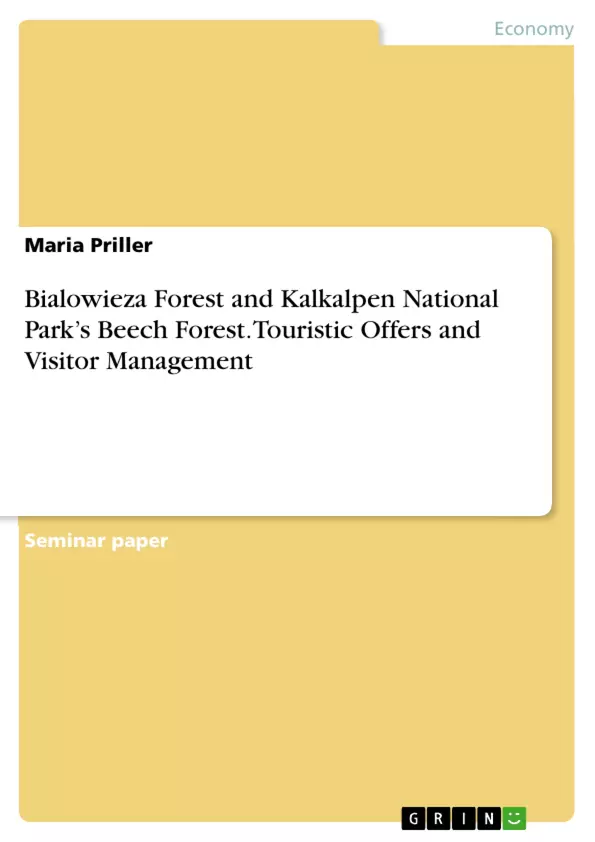This paper researches the Bialowieza Forest in Poland in order to gather much information about the natural world heritage site itself, its various touristic offers as well as the tourism and visitor management there. Secondly, ideas of how to enhance the visitor experience of the Kalkalpen Nationalpark’s beech forest were established. The results are based on other national parks and protected areas ideas and innovations, the results of Fürtner’s master thesis and on what we have learned in class. The team tried to establish ideas with a focus on sustainability. Also, some ideas refer to technology or leisure time for tourists and travellers. Moreover, the team tried to suggest ideas that are as practical as possible for a real-life execution.
Inhaltsverzeichnis (Table of Contents)
- Introduction
- Description of Bialowieza Forest in Poland
- Touristic Offers
- Tourism and Visitor Management
- Accommodation
- Local human population
- Management
- Threats
- Staff
- Kalkalpen Nationalpark's Beech Forest
- Practical Ideas for the Visitor Experience
- Establishing a Motor Park
- Digital Signage Display
- Treasure Hunt
- Picnic in the forest
- Get your own Beech tree
- 3-senses blind tree-discovery
- Photography competition and exhibition
- Mysterious monument
- Promotion a place scarcely visited
- Promotional efforts
Zielsetzung und Themenschwerpunkte (Objectives and Key Themes)
This paper aims to explore the Bialowieza Forest in Poland, a World Heritage site, and its unique tourism offerings. The research focuses on understanding the visitor management strategies in place and analyzing the potential for enhancing the visitor experience at the Kalkalpen Nationalpark's beech forest in Austria. This analysis draws inspiration from other national parks, protected areas, and relevant research findings, aiming to develop sustainable and innovative ideas for the visitor experience.
- Biodiversity Conservation and Protection
- Tourism and Visitor Management Strategies
- Sustainable Development and Innovation
- Enhancing the Visitor Experience
- Cultural and Historical Significance
Zusammenfassung der Kapitel (Chapter Summaries)
The introduction provides a comprehensive overview of the Bialowieza Forest, emphasizing its natural heritage, iconic species, and existing tourism offerings. It also delves into various aspects of tourism and visitor management, including accommodation, local communities, management practices, threats, and staff considerations.
The second chapter focuses on practical ideas for enhancing the visitor experience at the Kalkalpen Nationalpark's beech forest. It explores a range of innovative concepts, including a motor park, digital signage, a treasure hunt, picnic areas, tree adoption programs, blind tree discovery experiences, photography competitions, historical monuments, and promotional strategies.
Schlüsselwörter (Keywords)
The key terms and concepts examined in this paper include biodiversity conservation, tourism management, sustainable development, visitor experience enhancement, cultural heritage, national parks, protected areas, forest ecosystems, Bialowieza Forest, Kalkalpen Nationalpark, beech forest, visitor engagement, and innovative tourism practices.
- Arbeit zitieren
- Maria Priller (Autor:in), 2019, Bialowieza Forest and Kalkalpen National Park’s Beech Forest. Touristic Offers and Visitor Management, München, GRIN Verlag, https://www.grin.com/document/493786



